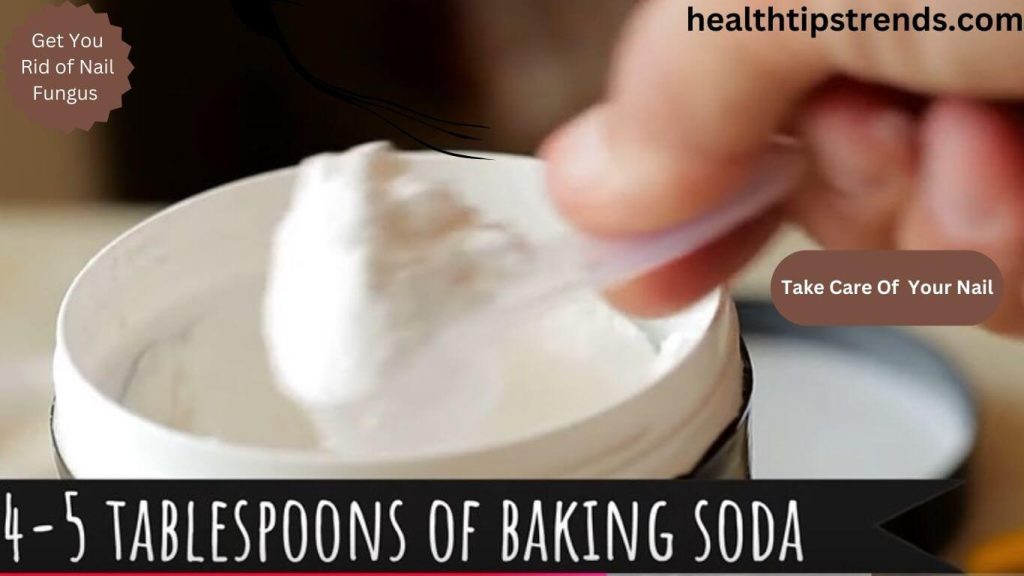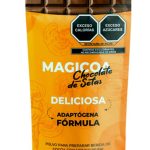As an Amazon Associate ,I earn from qualifying purchase .
Nail fungus, medically known as onychomycosis, is a common condition that affects millions of people worldwide. It can cause the nails to become discolored, thickened, brittle, and even painful if left untreated. If you’re dealing with nail fungus, you may be asking, “How do you get rid of nail fungus fast?” This article will provide you with a comprehensive understanding of what causes nail fungus, various treatment options, alternative remedies, and low-cost solutions to remove nail fungus effectively.

Understanding Nail Fungus: Causes and Risk Factors
To treat nail fungus effectively, it’s important to understand how it starts and why certain people are more prone to it. Nail fungus is caused by the overgrowth of fungi, particularly dermatophytes, which thrive in warm, moist environments. However, yeasts and molds can also lead to fungal infections. Nail fungus can affect both fingernails and toenails, but it is more common in toenails.
Common Causes of Nail Fungus
Fungal Exposure in Moist Environments: The most common way people develop nail fungus is through exposure to moist environments such as swimming pools, locker rooms, and public showers. These fungi thrive in damp areas, making your feet vulnerable when walking barefoot in these places.
Injury to the Nail: Nail trauma can create small cracks or breaks in the nail or the skin around the nail, which can serve as an entry point for fungal organisms. People who experience frequent nail trauma, such as athletes, are more susceptible.
Compromised Immune System: Individuals with weakened immune systems, such as those with diabetes, HIV, or autoimmune diseases, are more likely to develop nail fungus. The body may not be able to fight off fungal infections as effectively, allowing them to spread.
Wearing Tight or Non-Breathable Shoes: Wearing tight shoes or those made from materials that don’t allow the feet to breathe can lead to excessive sweating, creating a moist environment where fungi can grow. Toenails are more susceptible because they often remain in warm, dark shoes for long periods.
Poor Nail Hygiene: Failing to clean and properly trim your nails can increase the risk of fungal infections. Dirt and moisture can get trapped under long nails, creating a breeding ground for fungi.
Walking Barefoot in Public Areas: Walking barefoot in public places like gyms, pools, and locker rooms exposes your nails to fungi that are often present in these environments.

Risk Factors
Several factors increase the risk of developing nail fungus:
- Age: Older adults are more prone to nail fungus due to reduced blood circulation and slower nail growth.
- Family History: Genetics can also play a role, as susceptibility to fungal infections may run in families.
- Diabetes: Diabetics often suffer from poor circulation, especially to the extremities, which increases the likelihood of developing nail fungus.
- Smoking: Tobacco use can impact circulation and the immune system, making it easier for fungi to thrive.
How Do You Get Rid of Nail Fungus Fast?
While it’s important to manage expectations, treating nail fungus can take time, and results may vary depending on the severity of the infection. Here, we’ll look at several treatment methods, from conventional medical treatments to home remedies and low-cost alternatives.

Over-the-Counter (OTC) Treatments
For mild to moderate nail fungus, OTC treatments are often the first line of defense. These topical solutions contain antifungal ingredients like clotrimazole or terbinafine, which can penetrate the nail and kill the fungus over time.
- Antifungal Nail Creams and Ointments: Many creams are designed to be applied directly to the affected nails. These are generally more effective when the nail is trimmed and filed to thin out the surface, allowing the medication to penetrate deeper.
- Medicated Nail Lacquers: OTC antifungal nail polishes, such as ciclopirox and amorolfine, can be applied daily to infected nails. These are often more convenient and can help improve nail appearance while combating the infection.

Prescription Medications
For more severe cases, or when OTC treatments have failed, a doctor may prescribe stronger treatments. These include oral antifungal medications and stronger topical treatments.
- Oral Antifungals: Prescription oral antifungals, such as terbinafine (Lamisil) and itraconazole (Sporanox), are considered some of the most effective treatments for nail fungus. They work by eliminating the infection from within the nail bed and are typically taken for several weeks to months. These medications require monitoring by a doctor due to potential side effects, particularly on the liver.
- Topical Prescription Medications: Stronger than OTC solutions, prescription creams such as efinaconazole (Jublia) or tavaborole (Kerydin) are applied directly to the nail. These treatments tend to be more expensive but may be necessary for stubborn infections.
Alternative and Home Remedies for Nail Fungus
If you’re looking for natural or home-based treatments for nail fungus, several alternative remedies have been used with varying levels of success. While not all are scientifically proven, they can be low-cost and worth trying, especially for mild infections.
- Tea Tree Oil: Tea tree oil has natural antifungal and antibacterial properties. Applying a few drops of 100% pure tea tree oil directly to the affected nail 2-3 times daily can help reduce fungal growth. For better results, mix it with a carrier oil like coconut oil to enhance penetration.
- Vinegar Soaks: Soaking your nails in a solution of equal parts vinegar and water can create an acidic environment that inhibits fungal growth. A daily 20-minute soak may help relieve symptoms, although it can take several months to see noticeable improvement.
- Garlic: Garlic contains allicin, a compound with antifungal properties. You can apply crushed garlic or garlic oil to the affected nail to help fight the infection. However, the strong odor can be a downside.
- Oregano Oil: Oregano oil contains thymol, which has antifungal and antibacterial effects. It can be used topically on the nails, much like tea tree oil. Applying a few drops twice a day may help alleviate fungal symptoms.
- Vicks VapoRub: Surprisingly, many people report success using Vicks VapoRub on their fungal nails. The menthol and eucalyptus oil in Vicks have antifungal properties. Apply a small amount to the nail daily and cover it with a bandage.

Low-Cost Solutions for Treating Nail Fungus
Treating nail fungus can be expensive, but there are several low-cost strategies that can help you manage the infection effectively:
OTC Treatments and Generic Brands: Generic versions of popular antifungal creams, ointments, and lacquers are often just as effective as their branded counterparts but at a lower cost. Ask your pharmacist for recommendations on generic products that contain the same active ingredients.
DIY Solutions: Home remedies such as tea tree oil, vinegar soaks, or hydrogen peroxide are relatively inexpensive compared to prescription medications. While they may take longer to show results, they can be a cost-effective first line of defense against mild infections.
Proper Nail Hygiene: Good nail hygiene doesn’t cost much but can make a big difference in treating and preventing nail fungus. Keep your nails clean, dry, and trimmed. Filing down the thickened parts of your nail also helps topical treatments penetrate more effectively.
Footwear Management: Proper footwear can help manage and prevent nail fungus. Opt for breathable materials like cotton or mesh and avoid tight shoes that trap moisture. Regularly changing socks and disinfecting shoes with antifungal sprays can minimize fungal growth.

What Is the Most Effective Treatment for Nail Fungus?
The most effective treatment for nail fungus largely depends on the severity of the infection.
- For mild to moderate infections, OTC topical treatments combined with good hygiene practices may be sufficient. Consistency is key, as these treatments take time to penetrate the nail and work.
- For severe or persistent infections, oral antifungal medications like terbinafine are typically the most effective. These treatments target the infection systemically, though they may require monitoring due to potential side effects.
- Laser therapy, though more expensive, is another option for stubborn cases of nail fungus. It involves the use of light energy to kill the fungi and requires multiple sessions. While it’s effective, it may not be covered by insurance, making it less affordable for some.

Preventing Nail Fungus After Treatment
Preventing the recurrence of nail fungus is just as important as treating it. Here are some key prevention tips:
- Keep Feet Dry: Always dry your feet thoroughly, especially between the toes, after bathing or swimming.
- Avoid Barefoot Walking in Public Areas: Wear flip-flops or water shoes in public pools, locker rooms, and showers to avoid exposure to fungi.
- Trim Nails Regularly: Keep nails short and clean. Use sterilized tools to trim nails and avoid sharing nail clippers or files.
- Wear Breathable Footwear: Choose shoes made from breathable materials, and avoid wearing the same pair of shoes every day to let them air out.

Conclusion
Nail fungus is a persistent and uncomfortable condition, but it can be treated effectively with a range of options depending on the severity of the infection. Whether you opt for over-the-counter treatments, prescription medications, or low-cost home remedies, consistency and patience are essential. While oral antifungals are often the most effective solution, natural remedies like tea tree







